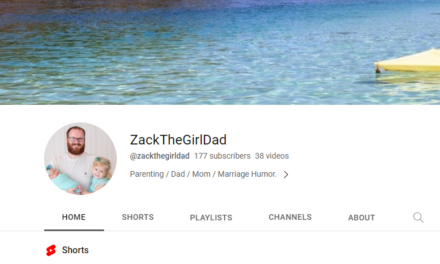The No. 1 challenge for creators who have a blog is revenue.
You can sell subscriptions and ads or sponsorships, but another tried-and-true opportunity also exists: Publish a book.
Publishing isn’t just for traditional authors. It’s a valuable strategy for content entrepreneurs who want to add a revenue stream and increase credibility. Sahara Rose De Vore, founder of The Travel Coach Network, did that. She turned her most popular blog posts into a book, Hey You, Just Go!
She is just one example of someone who repurposed their content to expand their influence, income, and opportunities.
Why create a book from your content?
Turning your blog or digital content into a new revenue stream like a book offers four crucial benefits for entrepreneurs and creators. There are probably many more, but I feel these are the most important.
- Passive income: Repurposing your content into a books generates revenue without creating something entirely new. Combined with print-on-demand platforms, upfront costs are minimal and publishing is easier than it’s ever been.
- Authority-building: A published book positions you as an expert in your niche. Your name on a book cover can instantly establish trust with your audience, opening doors to new opportunities, such as speaking engagements or coaching.
- Marketing: A book is more than a product. It’s also a powerful promotional tool for lead generation, email campaigns, and social media buzz. Promoting your new book is a huge marketing campaign that does more than sell books; it lets people know you’re a published expert on the topic.
- Wider appeal: A book lets you package your blog into an organized format that appeals to a broader audience.
How to turn your content into a book
I’m going to lay this out in five (pretty) simple steps. But I need to preface this by saying that publishing a book isn’t necessarily easy. You’re going to have to learn the basics of page formatting, cover design, and generating metadata for your books. Plus, you’ll likely need to learn how to connect and manage an online store attached to your website.
OK, on to my short guide to turning your blog into a new revenue stream.
1. Identify the right content
Audit your existing posts. Focus on high-traffic content with good engagement. Tools like Google Analytics, Semrush, or Ahrefs can help you find:
- Posts with high engagement or traffic
- Topics where your expertise shines
- Content formats (e.g., step-by-step guides) that might work well for a book
Analyze those high-performing posts to find common themes. Pick the most resonant theme as the basis of your book.
Helpful Resource: What Successful Bloggers Do Differently
2. Plan your chapters and layout
While blog posts make great content piece by piece, a book needs a cohesive flow from section to section. To do this, I strongly recommend creating an outline. Your sections (chapters) should logically progress and expand on the theme identified in step one.
I asked ChatGPT to create a very simple structure for outlining a book built on existing blog content. What it came up with was pretty good:
- Introduction: Set the stage with a powerful overview of your topic.
- Core benefits: Explain why your audience will care.
- Strategy: Detail actionable steps.
- Case studies: Incorporate practical examples.
- Next steps: Share how the reader can continue learning or apply the new knowledge.
You should craft an outline that fits your style and your content. With the outline drafted, look at the blog posts you want to include and determine where they fit into the book.
At this point, you should also have a sense of what you may need to create, such as new chapters or connecting paragraphs to tie the content together.
3. Refine your content for print
No matter how amazing your posts are (and I’m sure they are), your blog content won’t neatly fill all the components of a book. You need to edit the book content for tone, consistency, and flow.
You don’t need to tackle this manually. Tools like ChatGPT, Claude, and Gemini are really good at identifying gaps, inconsistencies in tone, and problems with the overall structure.
I am not advocating for asking an AI to write content. But if you provide the outline, the content from your blog posts, and clear instructions on what you want, AI can create a list of tasks you need to accomplish to refine your content.
This refinement stage is also your time to:
- Expand on high-performing ideas.
- Add personal anecdotes or research to enhance value.
- Remove repetitive sections to boost readability.
Once you’ve got your content put together, make sure to edit your manuscript thoroughly.
4. Design and publish
Creating a professional-looking book helps ensure readers take your work seriously. Start with tools like Canva or Adobe Express to design your cover, and platforms like Atticus focus on seamless interior layouts. If you’ve got some graphic design skills, Adobe InDesign and Affinity Publisher are more complex but much more powerful page layout options. You can also hire a cover designer to create it or use services like Tilt Publishing.
5. Market and sell
Your book is edited, designed, and published. Now what?
Lean into your entrepreneurial skills and market it. You can start with the audience from your blog and network to get the word out about your upcoming book. You also can do these three tactics proven effective for marketing books:
- Promote through your email newsletter, with exclusive early-buyer bonuses for loyal readers.
- Share excerpts, behind-the-scenes writing tidbits, and in-progress cover designs on social media to generate buzz.
- Offer your book during webinars, live events, or targeted ad campaigns. Giving attendees a free first chapter or a discounted link can build interest and attract sales.
I’m not going to belabor the marketing point. You’re an entrepreneur, this should be the “easy” part of the book publishing experience. Use your resources, lean into your network, and create an amazing product.
Transform your content into a new business asset
Your content isn’t just a compilation of blog posts. It’s your wisdom, insights, and opinions, all brimming with monetizable potential. Publishing a book can transform how you’re perceived while creating a new revenue stream from what you’ve already created. It doesn’t have to be daunting with the modern accessibility of publishing tools.
What’s stopping you from turning your next great content idea into a published product? Take the first step today by just looking at your most successful blogs to see if a common theme or topic jumps out at you.
About the author
Paul is the Senior Content Manager at Lulu. When he's not entrenched in the publishing and print-on-demand world, he likes to hike the scenic North Carolina landscape, read, sample the fanciest micro-brewed beer, and collect fountain pens. Paul is a dog person but considers himself cat tolerant.










